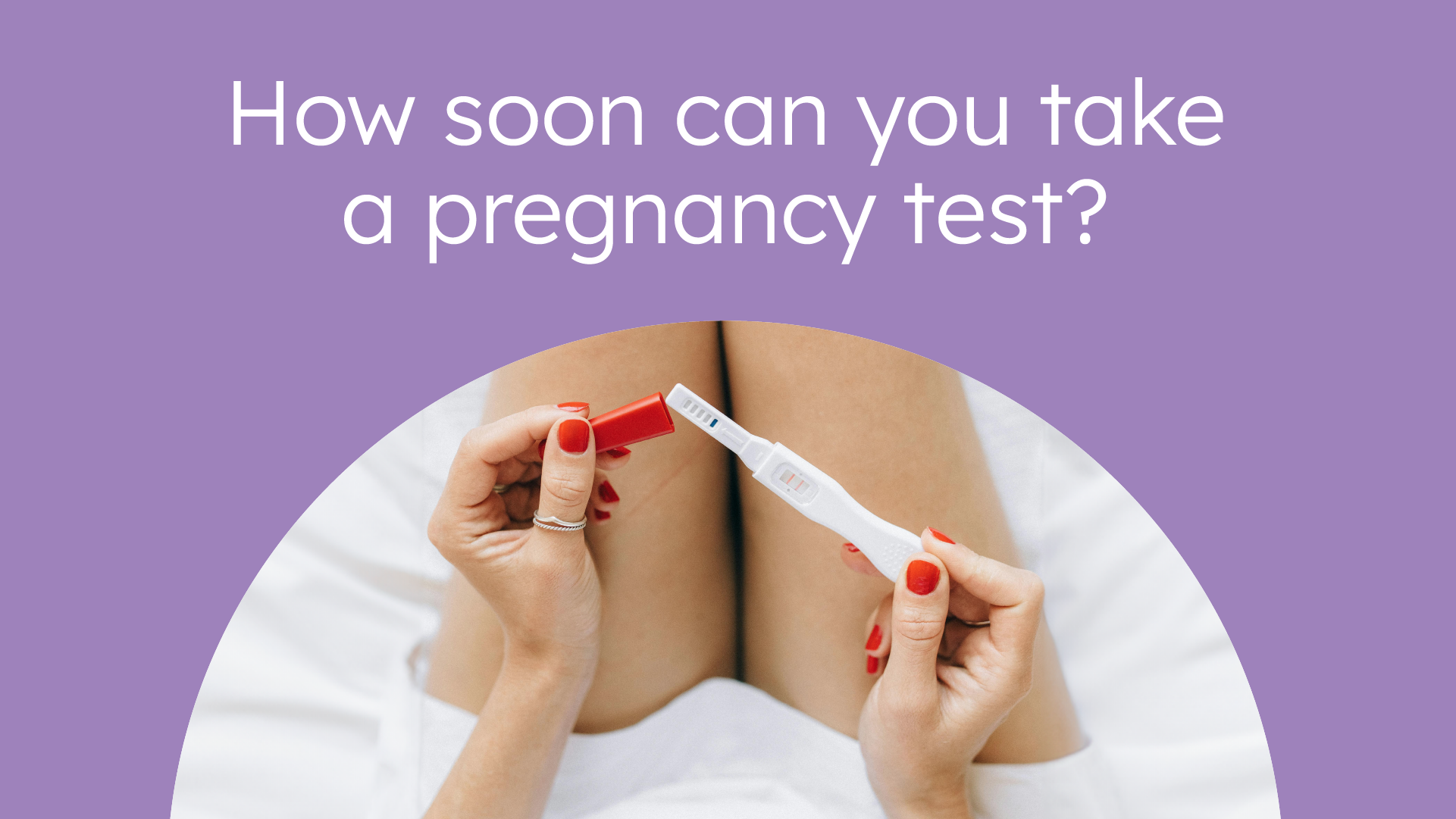
If you are trying to conceive, waiting to get that positive pregnancy test can be so exciting! We know you may be anxious to take a pregnancy test early. But taking a pregnancy test too early may give you an inaccurate assumption about if you’re actually pregnant or not. Keep reading to learn the best time to take a home pregnancy test.
What is a pregnancy test?
A pregnancy test measures Human Chorionic Gonadotropin (hCG) hormone levels in your blood or urine to determine if you are pregnant. This hormone is generally only made during pregnancy. At-home (urine) pregnancy tests have a high accuracy rate when used correctly.
If the results indicate you are not pregnant, you could still be in the early pregnancy stage, especially if you have used the test too soon. You could try again a few days following the initial test. The hCG hormone slowly increases as you progress throughout pregnancy. HCG is produced by the fertilized embryo approximately 10 days following fertilization.
A blood pregnancy test also has a high accuracy rate. This is generally performed following a home pregnancy test. This test can detect smaller amounts of hCG and can confirm an early pregnancy — about two weeks following conception.
When during my cycle do I take a pregnancy test?

Pregnancy tests are taken about two weeks after ovulation, during your luteal phase. What is a luteal phase? The luteal phase occurs during the second half of a woman’s cycle. This begins after ovulation occurs and ends the day your period starts. What happens during the luteal phase is the corpus luteum secretes progesterone, which is the hormone that stabilizes the uterine lining and prepares it to be receptive (or “sticky”) to an embryo and allows for implantation.
How soon can I take a pregnancy test?
Most home pregnancy tests recommend holding off on testing until a week after a missed period. However, some home pregnancy tests indicate earlier results than others. If you don’t want to wait until after a missed period, you can take a home pregnancy test about 14 days after ovulation. The average urine pregnancy test will detect the hCG level when it reaches 20-50 milliunits/milliliters.
Why can’t I take a pregnancy test earlier?
We know waiting two weeks to take a pregnancy test can be hard! However, it’s important to consider that if a home pregnancy test is taken before a missed period, the hCG levels may not be high enough to detect an early pregnancy when you might in fact be pregnant.
The fertilized egg can implant in the uterus at different times. This can then impact the timing of when hCG production occurs and when levels are high enough to be detected by a home pregnancy test. A blood test is considered more sensitive and can detect hCG at lower levels compared to a urine test.
What else can I do during the two week wait?
When you are trying to conceive and waiting on pregnancy results, we know relaxing during the two week wait can be challenging! However, trying to distract yourself with other activities can help you keep stress levels low during the two week wait.
Are there things you have put aside that you haven’t had time for? If so, consider picking them back up. Maybe it’s a good book, writing in your journal, spending time in nature, or planting some flowers around your home.
Journaling your thoughts or meditating are great activities to try during the two week wait if you need to release some emotions. This is also a great time to seek support from friends, family, or even others going through similar experiences. Our private Facebook group is filled with thousands of thoughtful, supportive women who are always there to lean on if needed.

Here are a few other activities you can consider during the two week wait:
- Going for a walk
- Yoga
- Cooking or baking
- Date night with your partner
- Painting or drawing
Try to resist the urge of taking Proov pregnancy test while you wait — we know it can be tempting! But taking extra tests during this waiting period is not going to give you a more accurate picture of if you are pregnant or not, as they could show negative results even though you may be pregnant.
Confirm successful ovulation during the two week wait
While the two week wait can feel like a bit of a black box, you can confirm successful ovulation during the two week wait to learn if you even have a chance at conception! “Successful” ovulation refers to an ovulatory event in which an egg was released and PdG (urinary progesterone metabolite) levels remained elevated for long enough to allow for the best possible chance at conception. Without sufficient PdG levels, it can be more difficult to get pregnant.
Proov invented the first FDA-cleared PdG test kit to confirm successful ovulation at home. With even more hormone insights, you can test your entire cycle and confirm successful ovulation with Proov Complete. Complete measures PdG levels in urine on days 7, 8, 9, and 10 after peak fertility — when PdG levels should be the highest.
Four positive PdG tests on these days confirms that successful ovulation did in fact occur. If one, two, or three of your Proov tests are negative, this could indicate PdG was not elevated all four days, which can make it more difficult to successfully conceive. If you never get a positive PdG test, this could indicate unsuccessful ovulation. In both cases, we recommend consulting your doctor.
Although you may have to wait for two weeks after ovulation to take a Proov early pregnancy test, you can confirm successful ovulation with Proov during the two week wait to help you get pregnant faster!














